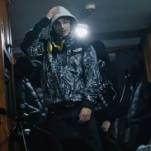Jefferson Airplane: Live And In Process

In 1987, the 20th anniversary of “The Summer Of Love” touched off a series of reflective broadcast news stories and magazine articles, along with list after list of the best music, movies and ideas that had survived the ensuing decades. I was 16 at the time, about to turn 17, and was already starting to lose my reverence for the rock icons of the late ‘60s. But I was still inclined to devour any piece of pop culture history I came across, so I pored over all those lists, and watched all those special reports. I especially remember a multi-part “history of rock” documentary miniseries, which hit all the Rolling Stone-approved highlights, complete with interviews with the artists who played at Monterey, Woodstock, Altamont and the like. During each of these segments, invariably, Jerry Garcia would turn up and offer his recollections of these generation-defining events. His main memory? How badly The Grateful Dead played and sounded.
As someone who’d been taught by radio DJs, rock magazines and various musical mentors to treat the output of the major ‘60s bands as inerrant, it was something of a revelation to hear Garcia talk about his music as though he were still some 25-year-old fledgling, stewing after the set because he broke two strings and couldn't hear himself in the monitor. From that point on, I started listening to the Dead and their ilk a little differently. I started thinking of them more the way I thought of local bands: just a bunch of musicians of varying skill and ambition, doing the best with what they had on hand, and turning out music that was flawed but often endearingly human.
Next week, the outstanding reissue/rarities label Collectors Choice is releasing four Jefferson Airplane live CDs: one featuring original vocalist Signe Anderson in her last performance with the band, on October 15th, 1966; one from the next night, when Grace Slick made her Airplane debut; a double-disc set from November of ’66, while the band was in the midst of recording Surrealistic Pillow; and another double-disc set from February of ’68, in the wake of Surrealistic Pillow and After Bathing At Baxter’s, by which point the Airplane had become one of the biggest rock groups in the world. It’s fascinating to hear the band in their earliest form: raw, but still electrifying. It’s a reminder that record labels back then didn’t always sign bands on the strength of their songwriting. It was the stage presence—and the scene—that sold.
Which was good in the case of Jefferson Airplane, because they weren’t exactly bubbling over with classic songs early on. When Slick joined, she brought the strikingly unique “White Rabbit” and “Somebody To Love” with her from her previous band The Great Society, but prior to that, Jefferson Airplane played a mix of covers and originals heavily influenced by the blues, garage-rock and British folk music. As a result, the material on the two October ’66 discs is wildly erratic: some lengthy “you had to be there” instrumental jams, some solid pop songs from the band’s debut album Jefferson Airplane Takes Off (which in concert sound more like generic mid-‘60s west-coast rock), and then, every now and then, a moment so arresting that it clarifies why this particular band connected so broadly when others did not.








































